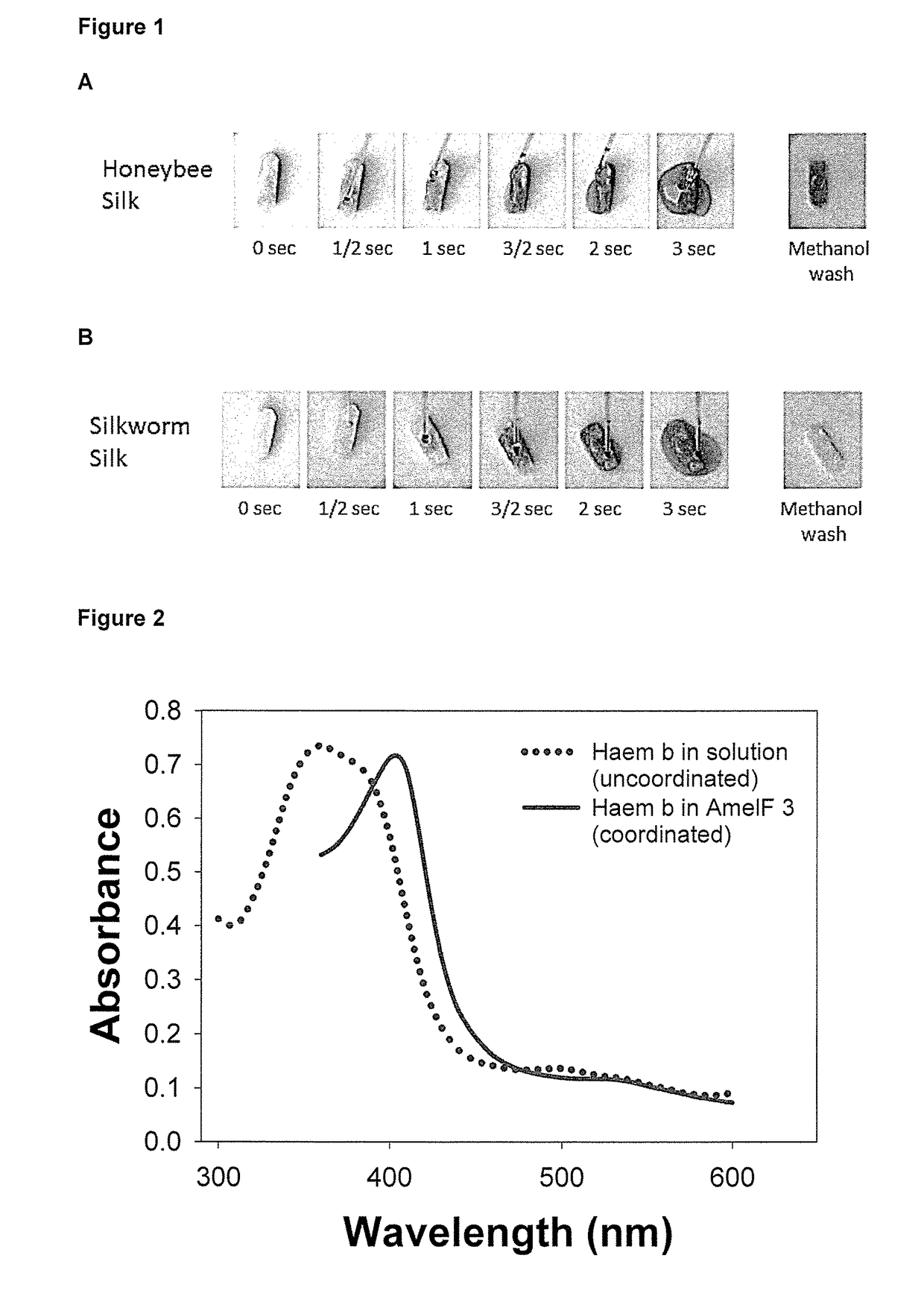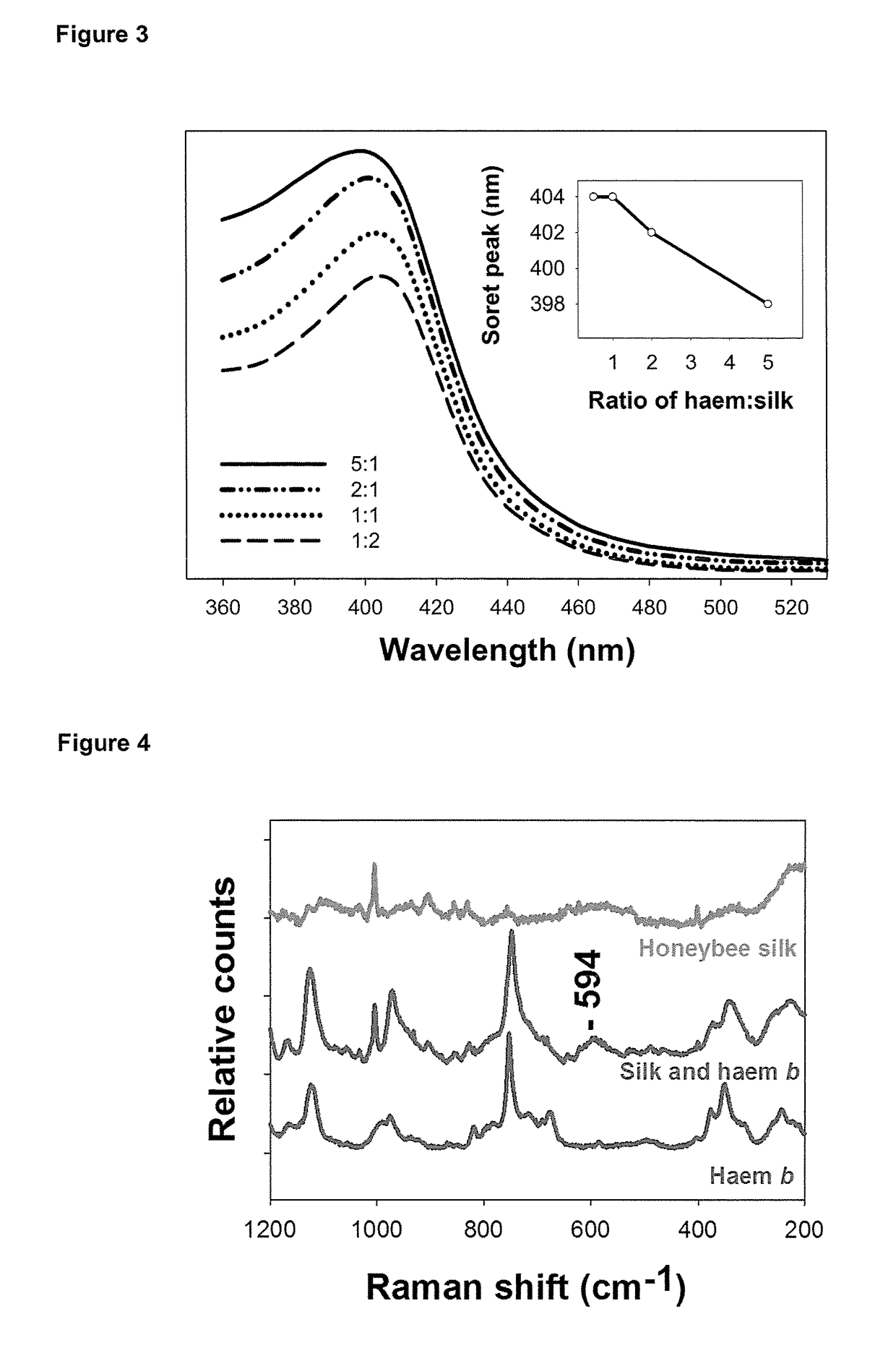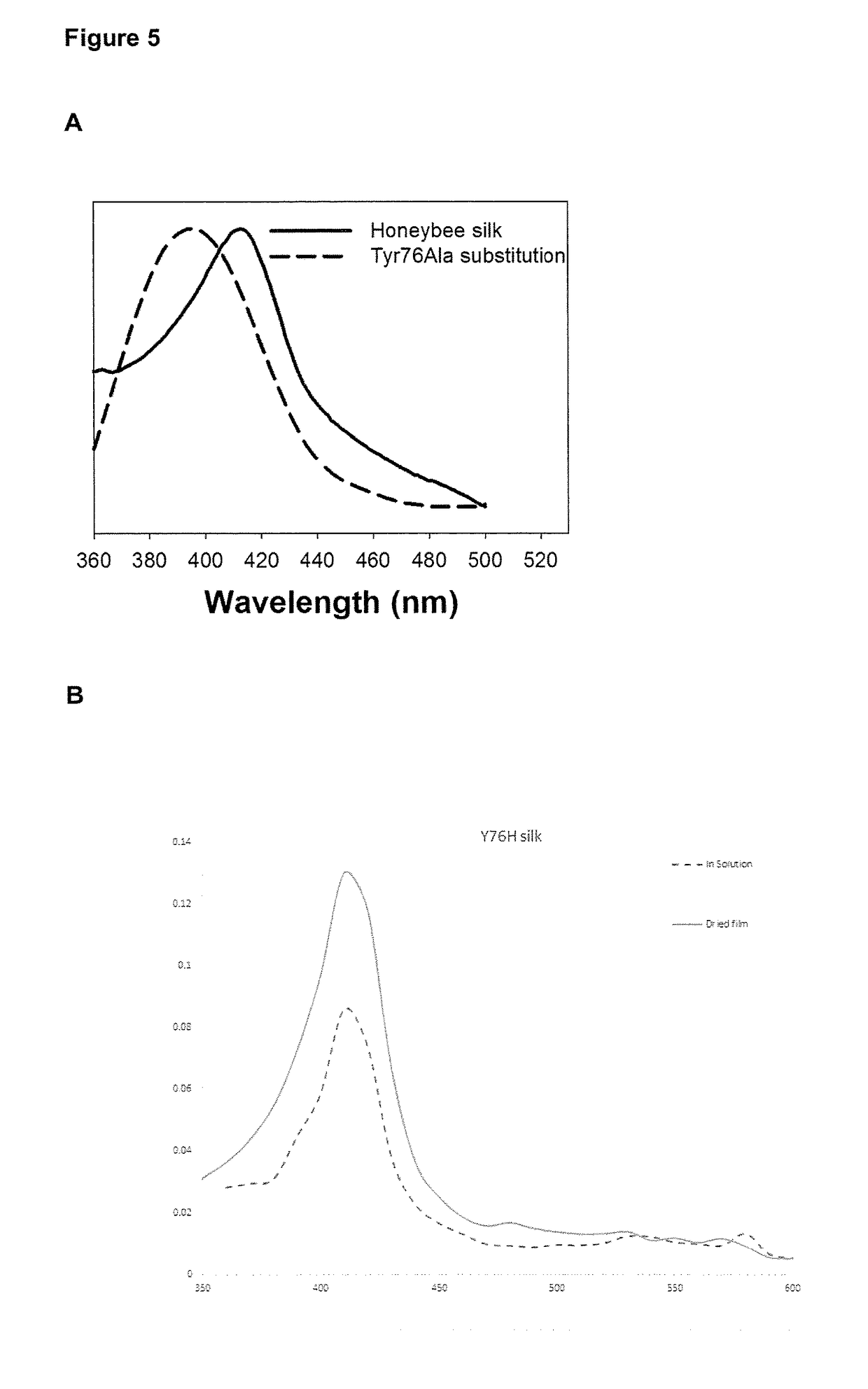Metalloprotein compositions
a technology of compositions and metals, applied in the field of metaloprotein compositions, can solve the problems of loss of biochemical activity, inability to use biosensors, and many proteins, and achieve the effects of reducing the number of ligands
- Summary
- Abstract
- Description
- Claims
- Application Information
AI Technical Summary
Benefits of technology
Problems solved by technology
Method used
Image
Examples
example 1
on of Recombinant Silk-Based Materials
[0378]Recombinant silk proteins were fabricated into sponges or films using methods described previously (Weisman et al., 2010; Huson et al., 2012; Rapson et al., 2014). Materials manufactured from silk polypeptides, such as sponges or films, were stored at room temperature until required.
example 2
des Having a Coiled Coil Region Bind Strongly to a Chelate Comprising a Chelating Agent and a Metal Ion
[0379]AmelF3 sponges were prepared as described in example 1. When a solution of haem b (0.5 mg / mL) in 70% methanol haem b is added to honeybee silk sponge (haem b in excess), the greyish green haem b solution is immediately absorbed into the sponge and within seconds the colour of the sponge changes to red indicating that the haem has become bound to the silk protein (FIG. 1A). The colour change observed with honeybee silk indicates a change in the coordination of the iron metal centre within the haem group, producing a material with a similar coordination to red haemoglobin. The colour was not removed by extensive washing with 70% methanol, 0.1M HCl or 0.1M NaCl. The retention of the red colour indicates that the haem is strongly bound in the bee silk sponge.
[0380]FIG. 1 demonstrates strong binding of a chelate to a polypeptide of the present invention.
example 3
des Comprising a Coiled Coil Region Form a Coordinate Bond with the Metal Ion
[0381]Transparent silk films were prepared as described in example 1 from AmelF3 to monitor the spectral properties of the material using UV / Vis spectroscopy.
[0382]An embodiment of the composition of the present invention was formed by co-drying a solution of AmelF3 and haem b. Briefly, 2 mg haem b and 20 mg AmelF3 silk sponge was dissolved in 1 mL of HFIP overnight at room temperature. The solution was aliquoted into either a cuvette or 24-well plate and dried at room temperature. The dried film was soaked overnight in 70% methanol to make the film insoluble in water.
[0383]Alternatively, haem b was ‘leached’ into a pre-formed film. The AmelF3 material was formed as described in example 1. The silk material was soaked in a solution of haem b (0.5 mg / mL; haem b in excess) in 70% methanol solution for between 1 and 48 hours followed by washing with 70% methanol to remove any unbound haem b and dried at room t...
PUM
| Property | Measurement | Unit |
|---|---|---|
| Wavelength | aaaaa | aaaaa |
| Wavelength | aaaaa | aaaaa |
| Structure | aaaaa | aaaaa |
Abstract
Description
Claims
Application Information
 Login to View More
Login to View More - R&D
- Intellectual Property
- Life Sciences
- Materials
- Tech Scout
- Unparalleled Data Quality
- Higher Quality Content
- 60% Fewer Hallucinations
Browse by: Latest US Patents, China's latest patents, Technical Efficacy Thesaurus, Application Domain, Technology Topic, Popular Technical Reports.
© 2025 PatSnap. All rights reserved.Legal|Privacy policy|Modern Slavery Act Transparency Statement|Sitemap|About US| Contact US: help@patsnap.com



